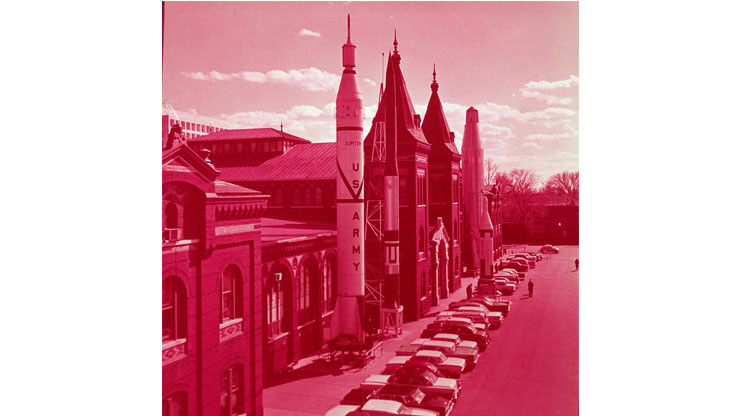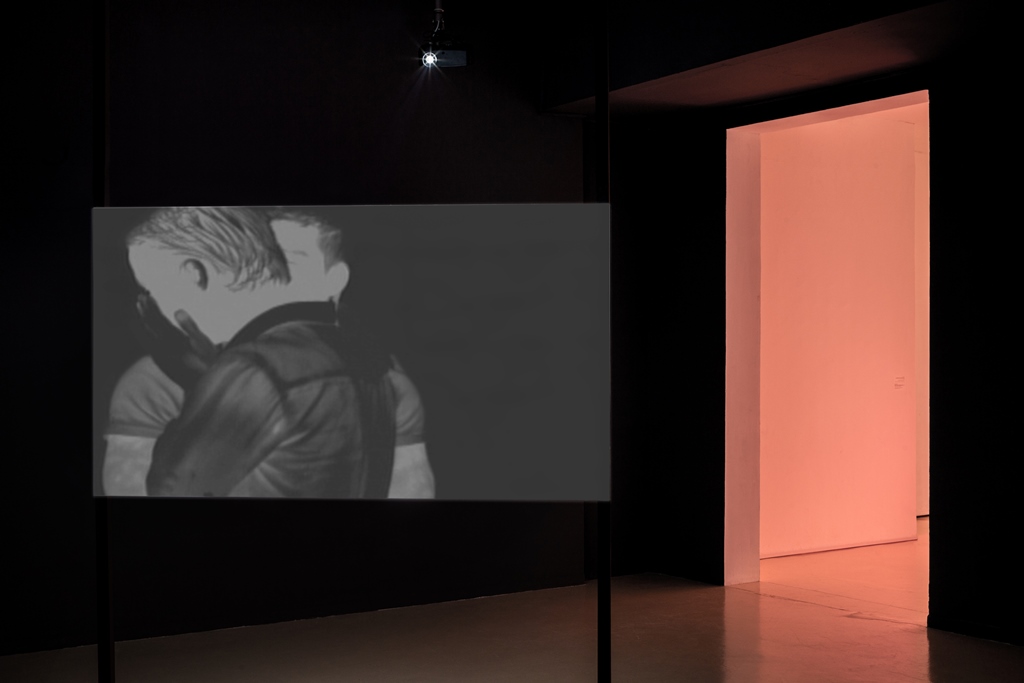
The digital age offers only a chronological timeline (chronos); an institutional, technological, and unidirectional time axis. Generic digital time is comprised wholly of numbers. It determines the Order. It pushes us in a single direction. We have been disengaged from human time, from the ability to create moments (kairos). This is the era of the “present continuous,” founded on an artificial system; a global age in which we exist everywhere simultaneously, “activated” without any ability to “turn off.” It is an unceasing state of urgent and pressing disturbances, with no intermediate time, turning us into living dead. This ongoing present leaves us incapable of identifying within ourselves cause and effect that occur on a timeline. Our only option is to attempt orientation by combining various elements and trying to understand their significance.
Leigh Orpaz is a stranger on this chronological timeline, staring at events around her. She stands outside time, searching for a way to belong. The range of gestures she employs in her works are not the goal, or even the means, but simply open-ended questions of orientation; attempts to acclimatize. She focuses on jaded images and is captivated by them – Western consumerist temptations, worn images stripped of their symbolic power but still beautiful. And beauty is an important principle of the capitalist cultural sphere, peddling experiences in lieu of products; a detailed array of fantasy and fiction woven of individual tatters of reality and marketed as hyper-life. This array creates the craving of our time, where artificiality appeals far more than actual reality. Orpaz tracks this interplay as one gazing at a magician explaining the illusion trick step by step, but refuses to accept it is a trick, as a symptom of the coercive institutional attempt to dictate personal time. She does not look down at this system, but rather observes it as one searching in candid longing for belonging. She is outside the social structure, wanting to be let in but lacking the ability to commit to the rules of the game, to submit to the capitalist system of desires. Images are emptied of their symbolic power, left empty husks of the things they should have become but will never be.
Orpaz’s range of actions has no horizon, and the exhibition space is arranged accordingly, inviting one to wander around with no start or end point. Every moment here is a kind of accident, a disruption of beauty that results in a sense of artificiality. Her work conjures encounters with moments emptied of narrative, with isolated images exposed as illusions but still holding promise – a promise that will never be fulfilled but always desired. This encounter contains both passion and heartbreak, establishing a cyclical intermediate universe disconnected from its chronological evolution. Her works are comprised of objects of desire exposed by capitalist potency; the products of false bounty that capitalism displays to the individual. Capitalism is founded on continuously activating this array of desires. Temptations elicit the longing induced by absence, and this propels us to action as we are consumed from within. It leaves behind heartbreak, an empty void disiring (in vain, always in vain) to be filled with all that one will never possess.
Orpaz stages her works in the exhibition through two distinct perspectives from which viewers may investigate these elements: one viewpoint is created with advanced vision technologies originally designed for security systems, while the other is provided by outdated, archival means of vision that captured a long-gone past, leaving only faded traces of memory.
In the video Breakfast (2014), for example, we see a club crowd through thermal footage. The camera captures the heat signatures of the filmed images, translating them to visual imagery. This thermal imaging allows us to see what the human eye cannot perceive. It allows us to overcome our natural limitations, but at the same time also exposes and confirms them. The thermal camera generates discernible images of invisible objects, thus incorporating them into our array of fantasies. The glowing figures seem like living dead, detached from time and place. The shining eyes, flat faces and repetitive head movements appear tribal, bound by the disturbing soundtrack. In combination,
these elements create a false expectation of some imminent event. The figures are indifferent to their surveillance, apathetic to their vulnerability. The club space is cramped with a packed community of individuals, many of them peering at their mobile phones. We view them viewing. The supposedly healing touch of technology – the ability to create order and control the uncontrollable – creates and then exacerbates anxiety over loss of control.
In Thames Town (2015), Orpaz uses a UAV (Unmanned Aerial Vehicle), another visual tracking technology developed for security and military purposes, which feeds the fantasy of “clean” warfare. The increasing use of UAVs over the last fifteen years has provided control over the immediate and distant spheres while saving money and human fatalities among those controlling the drones (but not necessarily among the objects of surveillance, as evidenced in “remote control” targeted killings, and significant “collateral damage”).2 In this work, the drone serves as a mechanised bird flying above Thames Town, one of the more extreme examples of the relations between center and periphery in the global world. This is a district of Shanghai built as a replica of a British city for the Chinese upper class. It includes Tudor houses, Victorian redbrick houses, and even an artificial river, with modern buildings on the outskirts.
The symbols of the British Empire constitute symbolic currency in the real-estate market, while Chinese architecture is shunted aside for this neoliberal real-estate product. In addition to Thames Town, another nine districts were built, each in a different European style. However, the “British” town does not function as originally designed.3 It exemplifies the way in which the “new” is defined by established reality, while established reality rushes to adapt in response to anything new. The powerlessness of the future is so pervasive it even wipes out the past.
Both UAV and thermal camera serve to maintain order and dominance, but just as importantly, they provide an impression of order and dominance. Such impressions are required to deal with the awareness of the breakdown that (not incidentally) has penetrated political-legal debate.
In a world of routine “emergencies,” a world perpetually threatened by calamity or terrorism on a massive scale, any excessive use of force seems reasonable and proportional. The drone and camera produce imagery that is part and parcel of the anxiety-inducing mechanism used by the elite to justify existing hierarchies and eliminate any possibility of conscious, critical resistance. This results in a monolithic vision of a civilization that perceives itself to be under siege and therefore continuously discusses “risk management” and “governability.” In such discourse we are constantly hanging on the precipice of catastrophe. Acts of protest and acts of terrorism are all conbined into one mixture along with epidemics and natural disasters, and any deviation from the norm is cast as a secular vision of cosmic futility.
Another twentieth century utopia – this time, a local one – is at the center of another work titled Lake Hula, 1955 (2015). This work is a manipulated and replicated digitized version of a super-8 reel filmed by Orpaz’s grandfather. The original was shot in the 1950s, documenting the engineering enterprise to dry the swamps in Hula Valley.
This symbolic act of mastering nature, a project that also served to create social cohesiveness, finally resulted in enormous environmental damage. Eventually the valley was flooded to restore its original state. The video presents images of gestures devoid of context, disconnected from the whole picture. A truck shovel moving sand from site to site – the gesture seems random and haphazard, but is this not the nature of actions taken in the present continuous, digesting and eroding past and future with the same indifferent doggedness?
Orpaz does not appear to be trying to shatter the false reflections that make up the contemporary. In fact, her works may be interpreted as an indication of her wish to belong to a greater social structure; an honest yet futile wish to submit to the rules of the game, without any true ability to fake belonging in these engineered situations.
For capitalism is what remains after belief is shattered. It assimilates everything it encounters. It pre-fashions desires, cravings, and hopes. The individual remains a consumerobserver shuffling between relics and ruins. Alternatively, the works may also be interpreted as a suggestion for contemporary living. Living in a world entirely comprised of unnatural gestures, the only way to “be in the moment” is to stand outside time. Alienation represents the only possibility of life, of awareness of lost chronological time, and the attempt to finally restore it.

Less Reading...

